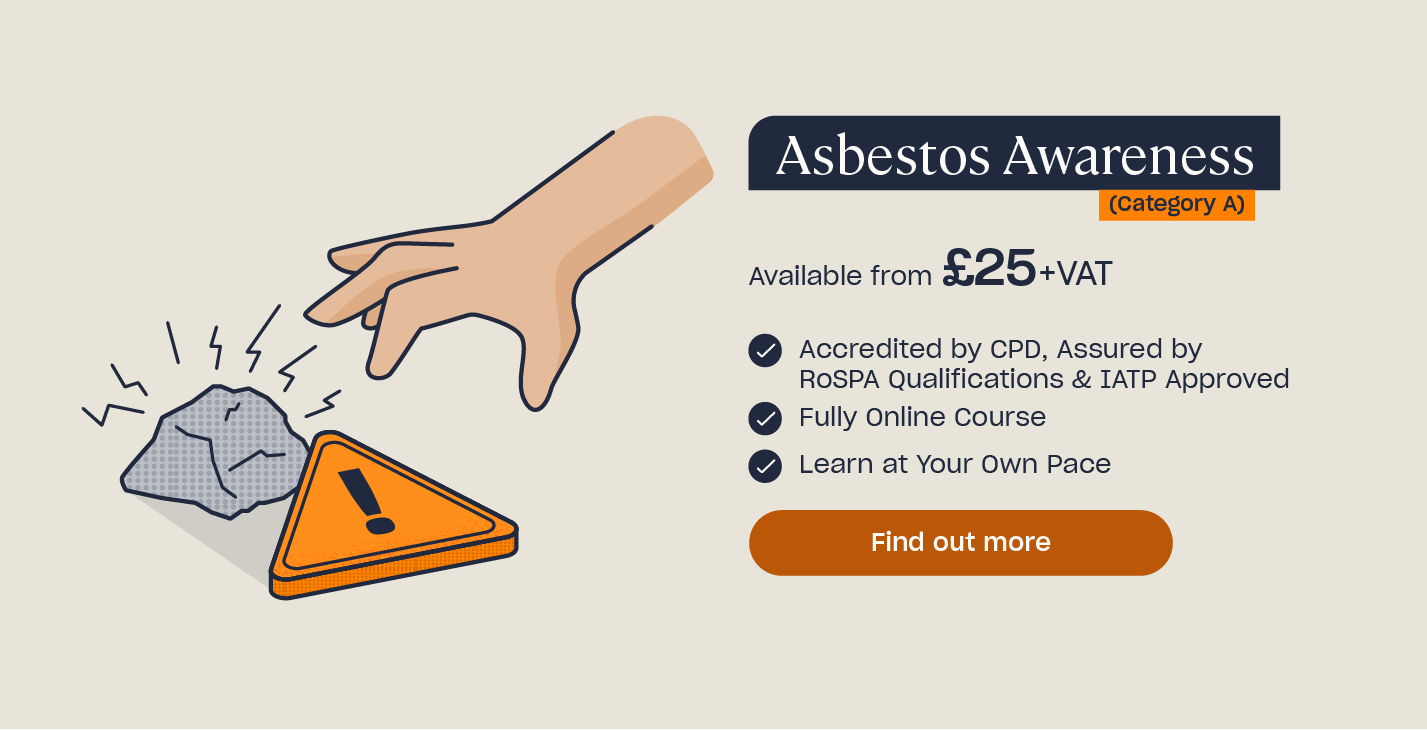How to Test for Asbestos
Asbestos is a fire resistant material which has been used in the building trade to provide cheap, fire-safe insulation.
There are around 2,500 deaths each year as a consequence of cancer caused by inhaling asbestos fibres.
Although the manufacture of asbestos products was banned in 1999, asbestos material still exists widely in buildings and products previously installed. Any home that is over 15 years old may contain materials made from asbestos.
Where to Test for Asbestos
Some of the products and places where you may test for asbestos include:
- Asbestos cement products (found in shed or garage roofs and walls, drain pipes, soffits and partitions).
- Textured coatings.
- Floor tiles, textiles and composites.
- Sprayed coatings on ceilings, walls and beams/columns.
- Asbestos insulating board.
- Lagging.
- Loose asbestos in ceiling or floor cavity.
- Water cisterns and pipes.
- Guttering.

There are also materials which will not be required to test for signs of asbestos. These are:
- Stone.
- Brick or breeze-block and mortar.
- Concrete.
- Metal.
- Glass.
- Wood.
It is unlikely that any buildings built after 2000 will contain asbestos; however it is wise that anyone responsible for the maintenance or repair of building remains vigilant about the possibility of asbestos being in the building, for example, its existence in old electrical equipment.
If possible, ask the equipment manufacturer or service engineer. The HSE advise that you should presume the equipment contains asbestos, unless you know it doesn’t, and label it appropriately with an asbestos sticker.
Need an Asbestos Awareness Course?
Our Asbestos Awareness (Category A) Training provides you with the knowledge and skills you need to keep yourself and others safe from asbestos.
Asbestos Testing Preparation
When testing for asbestos, knowing as much information about the building as possible can be useful to establish whether there is existing asbestos.
To do this, you can:
- Look for any records of previous asbestos work on the premises.
- Speak to the previous owners or tenants of the building.
- Speak to the facilities management company if you have one.
- Check with the equipment suppliers or repairers.
- Contact the building designer, architect or builder.
If you are unsure of where potential asbestos may be on your premises, then you may need to carry out an asbestos management survey. An asbestos management survey ensures that nobody will be harmed by the activities taking place on the premises. You will then receive a report stating the asbestos type, location, extent, condition and any surface treatment. This enables you to make a decision about how to go about safe maintenance using either a trained contractor or a HSE licensed contractor.
If you don’t have professional tests done to confirm the presence or absence of asbestos, materials are presumed to contain asbestos. You must apply full asbestos safety precautions when doing all work. This means getting either a licensed or a trained contractor to do the work.

Home and building owners are often rightly concerned by the existence of asbestos on their premises. If you believe you have asbestos in your home the advice is to leave it well alone. Unless it has been damaged or disturbed, it is considered safe.
How to Test for Asbestos
If you wish to test for asbestos, it is important that you never break a piece off to send for sampling. Only if a piece has broken off naturally can you send it for sampling, though this should only be carried out if there is no risk of spreading the debris or exposing yourself to dust. You do not need a licensed contractor if there is no such risk occurring.
*If there is a risk of dust exposure, then a UKAS accredited laboratory should be contacted to collect the samples as they require the specialist equipment required to deal with asbestos, such as respiratory protection. Remember to point out any potential hazards to the samplers, such means of safe access to heights.*
If there is no risk of spreading debris or dust exposure, testing for asbestos involves:
- Dampening the sample.
- Placing it in a self-sealing polythene bag.
- Putting this in a second self-sealing bag.
- Labelling it.
- Making arrangements for analysis by a UKAS accredited asbestos-testing laboratory.

If the tests show that asbestos containing materials (ACMs) or presumed ACMs are in good condition they can be left in place, but the duty holder must ensure:
- Information on location and condition is recorded and kept up to date.
- Everyone who needs to know about the asbestos is told about its presence, e.g. maintenance workers, contractors.
- ACMs are clearly labelled with the asbestos warning sign or some other warning system (for example colour coding).
- Those who might work on the material know that it contains or may contain asbestos, before they start work, e.g. when you ask for a quote for a job. You can then agree the precautions necessary to prevent exposure.
Always seek advice before thinking of removing any asbestos and follow the basic rules when carrying out asbestos cement removal work. DO NOT attempt to remove asbestos lagging, spray coatings or large areas of insulation board by yourself as these materials can only be removed by a licensed contractor.
What is an Asbestos Licence?
An asbestos licence is written permission from the HSE to carry out work with asbestos. It includes work on asbestos containing textured coatings, asbestos cement and certain work of ‘long duration’ on asbestos insulation boards.
‘Long duration’ means any one person doing this type of work for more than an hour, or more people doing the work for a total of more than two hours, in any seven consecutive days.
A licence is needed if the total time spent by all workers will exceed two hours. This includes time spent setting up, cleaning and clearing up.
Finally, always remember the HSE guidance, if you uncover or damage materials that may contain asbestos:
- STOP work immediately.
- Minimise the spread of contamination to other areas.
- Keep exposures as low as you can.
- Clean up the contamination.
- Don’t sweep up dust or debris – use a Class H vacuum cleaner or damp rags.
- Don’t take used overalls home.
- Don’t reuse disposable PPE.
- Don’t eat, drink or smoke in the work area.
Asbestos is an extremely dangerous material that’s still present in many buildings. As it has the potential to kill, it’s essential that it’s detected and removed safely.
Further Resources:
- What to Do After Recent Exposure to Asbestos
- How to Conduct an Asbestos Risk Assessment
- What are the Symptoms of Asbestos Exposure?
- Asbestos Quiz
- What is Asbestos Awareness Training & Who Needs it?
- Answering Your Asbestos Awareness Questions
- Can You Remove Asbestos Yourself?
- What Are The Three Types of Asbestos Training?
- Asbestos Awareness Training







